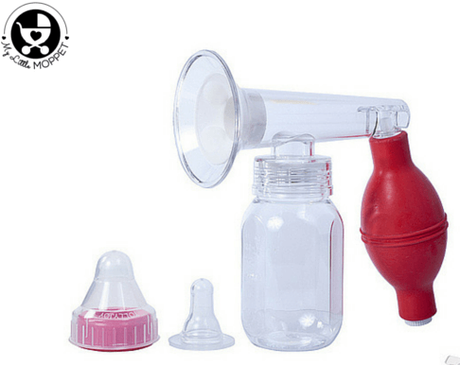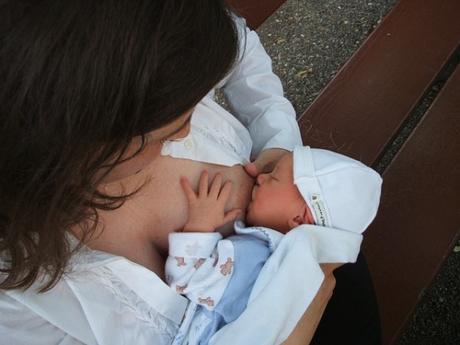Published: February 22, 2023 | Last Updated on: February 22, 2023 | by Hema
Here is everything you need to know about Low Breast Milk Supply – what causes it, what are the signs and what are the ways to fix them.
Jump To hide Signs your Baby is getting Enough Milk What are NOT signs of a low breast milk supply? Top Reasons for Low Breast Milk Supply 1. Delayed onset of lactation 2. Infrequent or scheduled feeding 3. Starting formula early 4. Improper latch 5. Exhaustion and stress 6. Postpartum issues 7. Insufficient glandular tissue 8. Pregnancy or birth control pills 9. Taking certain medications or herbs 10. Hormonal or endocrine problems 11. Previous breast surgery 12. Metabolic issues 13. Anatomical issues in the mother 14. Anatomical issues in the baby 15. Infant medical conditions 10 Ways to Fix Low Breast Milk Supply 1. Ensure a proper latch 2. Feed on demand 3. Empty both breasts at each feeding 4. Pump or express milk 5. Encourage more skin-to-skin contact 6. Massage your breasts 7. Use supplementation strategically 8. Eat a healthy diet 9. Get enough rest 10. Consult with a lactation expert When to go to the doctor References: Buy Healthy Nutritious Baby, Toddler food made by our own Doctor Mom !Breastfeeding is a natural process, but the truth is that it may not occur naturally to most mothers. Many new Moms face a variety of challenges when it comes to breastfeeding, and according to lactation consultants across the world, the most common one is regarding low breast milk supply.
It is natural for mothers to worry about whether their baby is getting enough breast milk – after all, there is no way of knowing how many ounces your baby is getting, which is the case with formula. Babies have very small tummies, starting with the size of a marble at birth, and growing to the size of a golf ball by 10 days.


The beauty of breast milk is that it adapts to your baby’s needs so that your child always gets exactly the nutrients he or she needs at any given point in time. Even if you have multiples, your body has the ability to produce enough milk for all babies. Since real low breast milk supply is something that affects less than 15% of mothers, you’re most likely making enough milk for your baby. Here are some signs that your little one is getting sufficient milk.
Signs your Baby is getting Enough Milk

- You can see or hear your baby drinking and swallowing
- On unlatching, there is some milk remaining in the baby’s mouth
- The baby’s hands and feet relax after nursing, and she seems content and sleepy
- Your breasts feel softer than they did at the beginning of the feed
- Your baby is wetting a good number of diapers – about 6-8 a day
- The baby has soft and regular bowel movements
- After the initial weight loss immediately after birth, your baby is gaining weight, about 0.7 to 1 ounce per day
- Weighted feeds show a difference – this is done by weighing your baby before the feed and right after, and the increased weight indicates how much your baby has consumed
It is also common for new parents to misread other signs as indicators of low breast milk supply when in reality they aren’t. Here is a look at some of them.
What are NOT signs of a low breast milk supply?

- Short nursing sessions – babies take anywhere from 5 minutes to 40 minutes to nurse
- Bunching feeds – this is called cluster feeding and is normal during a growth spurt
- Wanting to be fed frequently
- Not pooping every day – not all babies poop every day, some only go once in 3-4 days
- Wanting to be carried all the time – this has nothing to do with feeding
- Waking up in the night for feeds – this is completely normal and is actually desirable
- Getting only a small amount when pumping – direct nursing from the breast is far more efficient than pumping
- Small breasts – size has nothing to do with milk production
- Non-leaky breasts – breasts don’t always leak when they’re filled with milk
- Overall soft breasts – it’s not necessary for your breasts to be rock hard when they’re filled with milk
Top Reasons for Low Breast Milk Supply

1. Delayed onset of lactation
Breast milk doesn’t start flowing immediately after childbirth; it takes a few days for the milk to come in. However, in some cases, this can take longer than three days, in which case it is considered to be a delayed onset of lactation. This can cause a low breast milk supply, which can become a long-term problem if not managed properly.
2. Infrequent or scheduled feeding
Breast milk production works on a demand-supply system. When the breasts are emptied through nursing, it sends the body a signal to produce more. However, when babies are fed infrequently or if you schedule feedings at certain times, it can throw off the whole system. This is particularly important if babies are let to sleep throughout the night without a feeding. The breasts stay full, and the body doesn’t identify any need to make more milk, eventually leading to a low supply.
3. Starting formula early
Many Moms use formula as a ‘top up’ feed, but starting formula in the initial weeks can give your body the wrong message. This is a time when the breasts need all the stimulation they can get, and this needs to come through the baby’s sucking. Feeding baby formula at this stage can reduce the baby’s sucking instinct, which means that the breasts produce less milk since the demand is also low.

4. Improper latch
An improper latch is one of the most common causes of low breast milk supply, and it is also one that is easily rectified. Breast milk flows into the baby’s mouth when the baby’s lips press against the breast tissue surrounding the nipple so that the areola is entirely covered by the baby’s mouth. This can only be achieved with a good latch – a bad latch doesn’t just reduce the amount of milk the baby gets, it also hurts the nipples. Since the breasts don’t drain properly, it doesn’t give the body the signal to produce more milk.
5. Exhaustion and stress
It goes without saying that new Moms are exhausted after childbirth and with caring for a newborn, but not getting enough rest can hurt the supply of breast milk. This is particularly crucial in the initial weeks following delivery. An increase in cortisol and adrenaline can suppress the hormone oxytocin, which is essential for the milk to come in. New Moms are also prone to postpartum depression, which can make matters worse.
6. Postpartum issues
If the mother has experienced excess blood loss during birth or following it, it can affect the letdown of milk and can delay the onset of lactation. Another possible reason for low breast milk supply is a retained placenta, where parts of the placenta are still lying in the uterus.

7. Insufficient glandular tissue
Some women may have fewer milk-producing ducts or glandular tissue in their breasts, which becomes an inherent reason for low breast milk supply, especially for the first child. This could be due to a variety of reasons, including a condition called mammary hypoplasia. This can usually be seen in certain signs like a lack of breast change through pregnancy and widely spaced or asymmetric breasts.
8. Pregnancy or birth control pills
Getting pregnant soon after delivery can directly impact milk production, as the body diverts its resources in growing the new fetus. On the other hand, taking birth control pills can also lead to a low breast milk supply, especially if started within four months after childbirth.
9. Taking certain medications or herbs
Mothers who have a larger likelihood of premature births are often given certain medications to extend the pregnancy, and they can lead to a lower milk supply. Other medicines that affect milk production are decongestants or cold medications, insulin, antidepressants, medicine for hypertension or Vitamin B6 supplements. Besides these, consuming herbs like sage, peppermint or parsley may lower your supply.

10. Hormonal or endocrine problems
Any kind of hormonal disruption can affect milk supply, whether it is due to medications or a hormonal condition. Polycystic ovary syndrome (PCOS), an overactive or underactive thyroid or diabetes are common causes of low breast milk supply. If you had hormone treatments to help you conceive, there’s a chance that they have affected your body’s hormone signaling, which is essential for continuous milk production.
11. Previous breast surgery
Any kind of surgery or trauma to the breasts can affect their ability to produce milk. Breast reduction, augmentation, biopsy, lumpectomy, abscess, radiation, burns or breast infections are all culprits when it comes to low breast milk supply. Nipple piercings can also damage the ducts in the nipple area and affect milk supply.
12. Metabolic issues
Being obese or having glucose intolerance increases the likelihood of having trouble with milk supply. Studies have found that women who had a higher body mass index before pregnancy have a delayed onset of lactation. Problems with glucose tolerance can also affect the development of breasts during pregnancy, reducing their ability to produce sufficient milk.

13. Anatomical issues in the mother
Sometimes it could be something much more obvious, like an anatomical issue with the breast itself. Nipples that are flat, inverted, too large, too long or with skin tags can all provide a challenge for the baby to latch on and nurse. Very large breasts or tight breast tissue can also make it hard for the baby’s mouth to latch on.
14. Anatomical issues in the baby
In some cases, the baby may not be able to latch on due to anatomical abnormalities like a tongue tie, cleft palate or micrognathia (small jaw). Babies with abnormally low or high muscle tone also face problems. The most common of these is tongue tie, where the thin membrane connecting the tongue to the bottom of the mouth is too tight. This can affect the baby’s sucking, which in turn leads to incomplete emptying of the breasts and eventually lower milk production.
15. Infant medical conditions
Certain medical conditions can make it hard for newborns to latch and nurse directly from the breast. Jaundice makes babies sleep longer than usual, due to which they fail to frequently empty the breast, leading to a low breast milk supply. Premature or special-needs babies also may not be able to nurse for many days initially.
Many of the causes for low breast milk supply are merely temporary and can be fixed easily with the right support.
10 Ways to Fix Low Breast Milk Supply

1. Ensure a proper latch
A good latch is of the utmost importance when it comes to tackling low breast milk supply, regardless of which breastfeeding position you choose. Bring the baby to the breast, leading with the chin first. The baby’s chest and stomach should be close to your body. The tongue should be under the breast, and the baby’s mouth should be filled by the breast, not just the nipple. The lips should be turned out and the chin should be in contact with the breast.
2. Feed on demand
There’s no need to feed baby according to a schedule – feeding on demand is the best way to ensure that baby never goes hungry and that your breasts are properly emptied in every nursing. In the initial weeks, babies feed around 8-12 times per day, which is around every 2-3 hours. This applies to the nighttime as well, especially since the body produces more of the lactation hormone, prolactin, at night. Regular, frequent feedings will give the body the signal to keep producing enough milk.
3. Empty both breasts at each feeding
When feeding, make sure you let your baby nurse at both breasts at each session. About 10-15 minutes per breast is a good rule of thumb, as less than that probably won’t give your baby enough. You can also follow baby’s cues to switch breasts – like when he gets tired or fussy.

4. Pump or express milk
As mentioned earlier, the best way to boost breast milk supply and tell the body to produce more milk is to empty your breasts completely. A breast pump comes in handy here, so you can pump any leftover milk at the end of a feeding, once your baby has stopped nursing. You can also try double pumping – after nursing and pumping any remaining milk, drink a glass of water, wait for 20 minutes and pump again.
5. Encourage more skin-to-skin contact
The WHO and UNICEF both recommend ‘early initiation of breastfeeding within 1 hour of birth‘. The expert-recommended way for this is through the breast crawl, which is when the baby is directly placed on the mother’s chest and encouraged to seek out the breast herself. This skin-to-skin contact also stimulates oxytocin, which activates the prolactin responsible for the letdown of breast milk.
6. Massage your breasts
A gentle massage helps stimulate the glands and encourages letdown. First, apply a hot, moist compress to the breast to open the ducts. Gently tap the breast from top to down and over the nipple, using the fingertips. Massage the area around the nipples in circular motions moving from outward in. You can also massage during the feeding session, holding the breast between the thumb and forefinger and squeezing gently.

7. Use supplementation strategically
If you need to use formula or a top-up feed, use it in a way that doesn’t hamper your breastfeeding progress. You can use a feeding tube that is attached to the nipple so that when the baby is drinking, he is also sucking on your breast, which will stimulate the ducts. This will help your body produce more milk, so you can do away with the formula supplementation.
8. Eat a healthy diet
A poor diet or insufficient calorie intake can lead to a low breast milk supply, so make sure you are eating all the right foods. You need to get an extra 500 calories a day, as well as protein, iron, calcium and fiber. Include foods like oatmeal, lean meat, green leafy vegetables, eggs, dairy and dates. You can also try special recipes like lactation cookies, or a lactation drink. At the same time, make sure you’re drinking enough water since dehydration can drastically lower your breast milk supply.
9. Get enough rest
The old saying ‘sleep when the baby sleeps’ may not be practical for everyone, but there is a reason it’s so popular. Enough rest and relaxation are necessary to keep the level of your stress hormones low, so that the body can do its job of producing more milk for your baby.

10. Consult with a lactation expert
If nothing seems to work or if you are just feeling too overwhelmed to work through your low breast milk supply problem, it may help to consult a lactation expert. Most reputed hospitals have an in-house expert, or they can at least refer you to one. Having an expert evaluate the baby’s latch and overall feeding can be very helpful.
When to go to the doctor
If you notice any of these signs, your baby may be dehydrated – he needs to be taken to the doctor right away:
- Dark urine
- Less frequent urination
- Crying without tears
- Sunken eyes
- Dry lips
- Yellowing of the eyes or skin
- Lethargy, hesitation to feed
- Excessive crying
- Weight loss of more than 10% of the birth weight
Breastfeeding is a journey, and both mother and baby learn along the way. It takes a few weeks to settle down into a comfortable routine, after which it’ll be smooth sailing for the most part. Don’t give up right at the beginning – that’s why it helps to be informed of the possible challenges you’ll encounter. This gives you the power to fix any issues with low breast milk supply. Don’t think less of yourself or feel like a failure – breastfeeding takes work, but its worth it.
References:
Buy Healthy Nutritious Baby, Toddler food made by our own Doctor Mom !
Shop now!You may also like
- 10 Natural Ways to Increase Breast Milk Supply

- 20 Top Foods to increase Breast Milk Supply Naturally-Your…

- 5 Golden Reasons Why I Think Breast is Best

- How to Use a Breast Pump and Breast Milk Storage Guidelines

- 12 Surprising Uses for Breast Milk

- Is my Baby getting enough Breast Milk?

Filed Under: Baby, Breastfeeding Tagged With: breast, breastfeeding, Breastmilk, low breast milk, low milk supply
